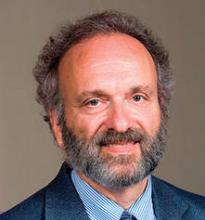Next year, the federal government will launch the Center for Medicare and Medicaid Innovation, a new department to oversee the portfolio of payment pilot projects called for under the Affordable Care Act. As part of its charge, the innovation center will develop and evaluate pilot projects for new and old payment ideas that include accountable care organizations, patient-centered medical homes, bundled payments, and capitated payments. Officials at the new center, one of the Centers for Medicare and Medicaid Services (CMS), will have the authority to extend or expand projects that show the potential to improve quality or cut costs.
Stuart Guterman, who studies payment policies for the Commonwealth Fund, explains the potential and the challenges for officials leading the new innovation center.
Skin & Allergy News: Why did lawmakers create this innovation center as part of the Affordable Care Act? Is it necessary?
Mr. Guterman: I think it is necessary. I think, in fact, it may turn out to be one of the most important provisions in the law. It focuses the attention of the CMS, which runs the two biggest health programs in the country, on the notion of innovation. It emphasizes the idea that we need to try new approaches to both payment and delivery of health care to get out off the path that we’re on, which is leading to ever-growing health care costs and more pressure on the health care system.
We already spend 50% more than any other country in the world on health care. Everybody points to the amount of waste in the system. But it’s harder to identify ways of actually getting rid of it and making the health care system work better for people. That’s what this innovation center was intended to do—to focus the attention of the federal government on that issue and to bring in the other parts of the health care sector to collaborate on better ways of providing care and better ways of paying for care.
SAN: Some of the concepts – such as medical homes and capitated payments – have been tested before. What makes this effort different?
Mr. Guterman: Capitation was tried in the 1990s, but the world was a different place then. In the 1990s, we didn’t have the kinds of measures of health system performance that we have now. Also, the notion of capitating payments so that you provided a strong incentive to reduce costs got separated from the notion of providing care in an effective, efficient way. So we started out with a managed care movement that was focused on providing coordinated care for patients and we ended up with a movement that was focused primarily on reducing the costs, sometimes in arbitrary ways. Today, I think we have the tools to avoid going off that track. We may not get all the way to capitation, but there are bundled payments and other strategies that get us away from the current fee-for-service system.
In terms of the medical home, models are being tested by various private payers, Medicare is developing a demonstration project, and Medicaid is testing several models. But those efforts are fragmented, just like the rest of our health care delivery and financing systems. If we conduct these pilots individually, they are much less effective than if they can be coordinated and focused, using the same kinds of measures.
SAN: What are the keys to making the innovation center successful?
Mr. Guterman: We need to bring together all of the health care system’s stakeholders. We are currently projected to spend between $30 trillion and $35 trillion on health care over the next 10 years. The issue is not what to cut, it’s how to use some reasonable amount of money to buy the kind of health care we think our system should produce. That requires the involvement of everyone – providers, patients, and public and private payers.
SAN: What challenges will officials at the innovation center face in rapidly testing new payment concepts?
Mr. Guterman: It’s easy to say that everyone ought to be involved, but right now people tend to look at change as something that threatens them. We need to overcome that. We also need to have patience. A lot of these projects will take time to develop and implement, and to adjust as they go along. But Congress and the American public also need to have patience and realize these strategies will take awhile to unfold.
SAN: Is the innovation center’s work likely to have a significant impact on lowering costs?


